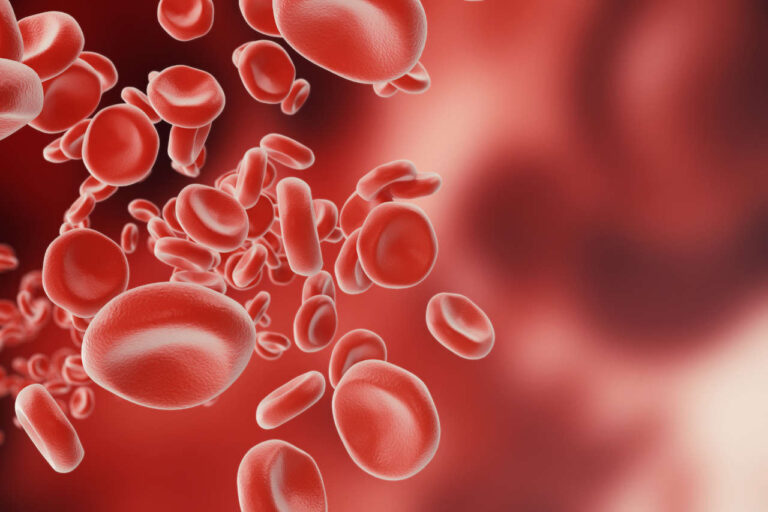
Glatiramer acetate, known by its brand name Copaxone and Glatopa, is a drug used to treat sclerosis nyingi (MS) and its other relapsing forms. It is an immunomodulator and works by suppressing the body’s immune system.
Get Glatiramer Copay Assistance
Msaada wa KifedhaThe drug is a synthetic polypeptide made up of four amino acids. These amino acids are also present in myelin, the insulating material covering our nerve cells. It is given as a once-daily injection.
Glatiramer is a well-tolerated medication. It is used to reduce the frequency of MS relapses and slow the progression of the disability. The drug doesn’t completely treat MS, but it decreases its development.
Patients allergic to glatiramer or its components should not take the medication. The drug should be used with caution in pregnancy and breastfeeding. It should only be used after consulting a doctor.
Similarly, patients with an active infection should seek expert medical help before taking glatiramer.
What Is Glatiramer Used For?
Glatiramer is an FDA-approved drug used for treating relapsing-remitting multiple sclerosis (RRMS), clinically isolated syndrome, and secondary MS.
The drug reduces the frequency and severity of multiple sclerosis relapses and slows the progression of the disease. In some cases, it may improve physical functioning and quality of life.
How Does Glatiramer Work?
Glatiramer is an immunomodulator drug used to treat multiple sclerosis (MS). It works by depressing the immune system, which reduces inflammation and preserves the brain and spinal cord nerve fibers.
The drug performs its function by binding to a specific type of T-cell receptor. This receptor is called MHC class II, which recognizes and destroys myelin. Glatiramer prevents the T-cells from recognizing and attacking myelin. This mechanism helps to reduce inflammation and preserve nerve fibers.
In addition, glatiramer increases the production of regulatory T-cells. These cells are essential for maintaining immune balance. Regulatory T-cells suppress the auto-reactive T-cell activity responsible for attacking myelin.
An increase in the number of regulatory T-cells will decrease the auto-reactive T-cells’ activity. This process depresses inflammation.
Glatiramer also enhances the production of other immunomodulatory molecules. These include interleukin-10 and transforming growth factor-beta.
These molecules lower inflammation and promote tissue repair. This, in turn, helps to preserve nerve fibers in the brain and spinal cord.
How Is Glatiramer Used?
Glatiramer is usually administered as an injection, typically once a day or once every other day. The injection is commonly given into the fatty tissue below the skin. The administration site should be switched between different body areas, such as the upper arm, thigh, or abdomen.
The dose of glatiramer is determined by the doctor, depending on the patient’s age, weight, medical history, and response to the drug.
Patients should follow the doctor’s instructions for taking glatiramer.
Zungumza na Mtaalamu
Kuhusu Msaada wa CopaySide Effects of Glatiramer
Like any medication, there are side effects associated with the use of glatiramer. These side effects can be classified into mild, moderate, and severe.
There are also some common side effects of the drug. They generally go away with time as your body gets used to the drug. These include:
- Flushing
- Maumivu ya viungo
- Maumivu ya kichwa
- Upele wa ngozi
- Mild pain
- Uchovu
- Kikohozi
- Kichefuchefu
- Kizunguzungu
- Anxiety
Madhara madogo
The mild side effects of glatiramer may include:
- Flushing
- Majibu ya tovuti ya sindano
- Maumivu ya kichwa
- Mild pain
- Uchovu
Moderate Side Effects
These side effects may occur more often and can be more severe. They include:
- Maumivu ya kifua
- Kichefuchefu
- Kizunguzungu
- Anxiety
- Unyogovu
Madhara Makali

The severe side effects are the most serious and should be reported immediately to a healthcare provider. They include:
- Ugumu wa kupumua
- Mizinga
- Swelling of the face and throat
- Severe chest pain
- Palpitations
- Irregular heart rate
Rare side effects are:
- Difficulty speaking
- Difficulty moving
- Kuhara
- Kupoteza hamu ya kula
- Burning of the skin
It is important to note that only some people who take glatiramer experience side effects. However, if any unusual, persistent, or intolerable side effects occur, you should report them to your healthcare provider immediately. They can help determine the best course of action and relieve the symptoms.
Contraindications of Glatiramer
First, glatiramer should not be given to people hypersensitive to its components. These components include mannitol and lactose. Additionally, it should not be used in patients who have a history of myasthenia gravis, an autoimmune disorder that causes muscle weakness.
Individuals with an active infection, such as HIV or hepatitis B should not take this drug. Use glatiramer acetate cautiously in patients with preexisting immunosuppression or those who are receiving a vaccination.
Pregnant or breastfeeding women should avoid glatiramer or only use it in extreme need. It is unknown whether this drug is excreted in breast milk, so it is best not to take the medication during breastfeeding.
Pata Uidhinishaji wa Awali
Msaada wa CopayStrength of Glatiramer
Glatiramer is available in two types of dosing strengths:
- 20 mg/ml
- 40 mg/ml
Both of these doses are given subcutaneously. Glatiramer 20 mg/ml and 40 mg/ml formulations are not interchangeable. Glatiramer 20 mg/ml is administered daily and glatiramer 40 mg/ml is administered three times per week.
Dose of Glatiramer
Usually, the dose of glatiramer is defined by the patient’s weight, age, and other factors. However, below is the recommended usual dose of glatiramer.
Adult Dose For Multiple Sclerosis
In adult patients with MS, the 20 mg dose of glatiramer is given once a day. In contrast, a 40 mg dose is given three times a week.
The drug is available in vials and prefilled syringes and should be given only via a subcutaneous route. The FDA has not approved this drug for patients under the age of 18 years.
Cost of Glatiramer
The price of glatiramer depends on the manufacturing company and the region where you are purchasing it. The cost can also vary depending on the regimen plan and type of insurance.
However, the average cost of glatiramer is about $3,485 for 30 ml.
Hitimisho
Glatiramer is an immunomodulator drug used to treat multiple sclerosis. The drug suppresses the immune system, thus decreasing inflammation and preserving the nerve fibers.
Glatiramer comes under two dosing regimens: 20 mg/ml and 40 mg/ml. It is administered as an injection, typically once a day or once every other day.
Side effects can include flushing, joint pain, headache, nausea, dizziness, and anxiety. The average cost of glatiramer is around $3,485 for 30 ml.













